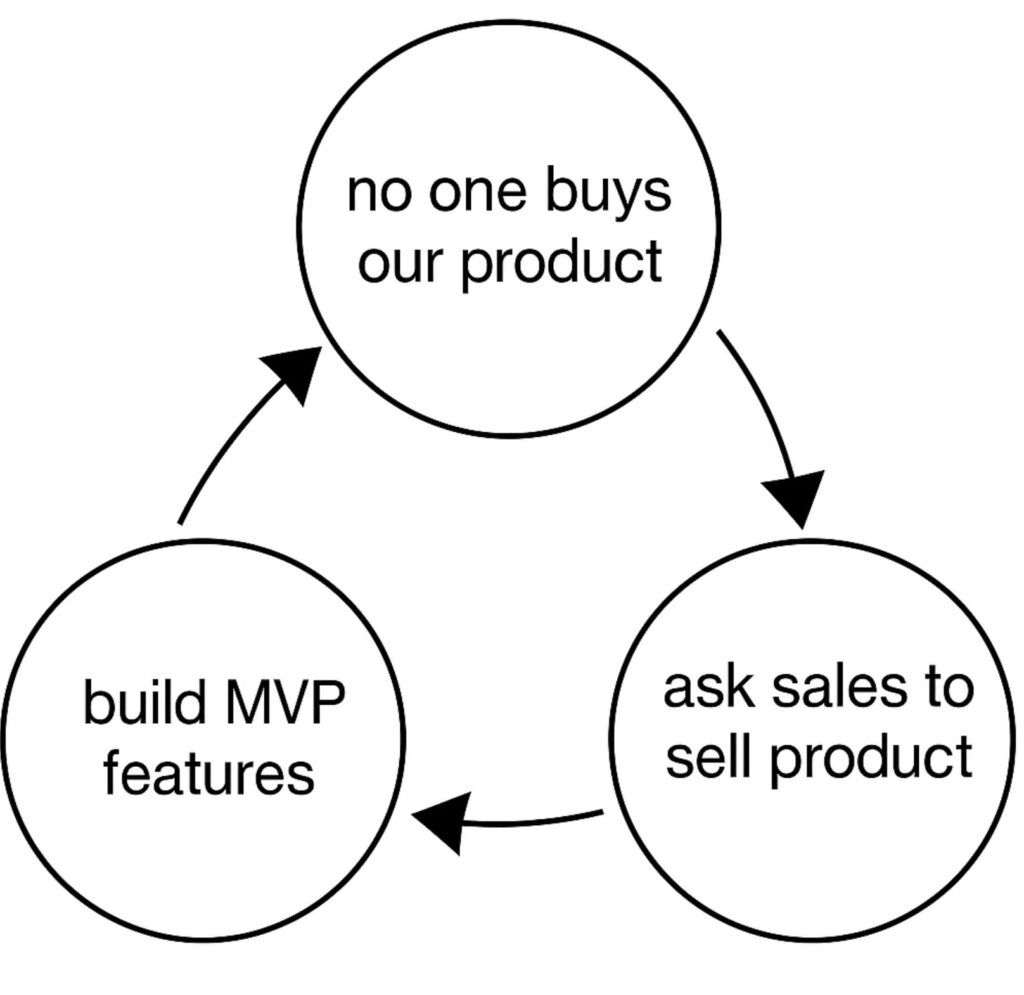Have you ever been involved in a corporate project to bring a new digital product to the world? How did it go? Corporate MVP’s tend to easily get stuck in a version of the product death cycle coined by David Bland where you prioritize and build features that no one buys.

Here are some tell-tale signs it’s happening.
- Your product development process for new product offerings is no different from how you build and launch features for an existing product.
- You build features end-to-end without any interaction with customers.
- User Acceptance Testing is done with proxies for users, instead of actual users.
- You launch without any users waiting to try your features out.
While there are many reasons for this, it often boils down to not having a differentiated process for building new products. There’s no silver bullet, but here are some key patterns for getting corporate projects back on track to building something customers love.
7 Key Patterns for Getting Unstuck.
Recognize that new product development is experimental, so validating assumptions through selling should be a core activity. Unless your engineering team is at the forefront of research and development, you typically already know what capabilities you can build, so the business risk is concentrated more in what you can sell.
Be opinionated. Set out to solve a clear problem in a differentiated way. Build one tool before you build a box of tools. For each tool you want to build, ask: can we make it better or faster or different enough from what exists that it is remarkable? If you can, then please talk about it to anyone who will listen.
Don’t build in a silo. Your larger organization outside the team building the product are also stakeholders, and should be so actively involved in the process that they know its goals, roadmap and can discuss evidence you’ve shared that shows you’re on the right track.
Sell before you build. You’ll still have to sell what you build anyways, so might as well get a head start. Your prospective customers must be congregating somewhere, so find it and talk about what you’re building to see what resonates. Show and tell, then build.
Have a safe space for product tear downs and criticisms. Titles and current responsibilities do not translate magically to insight, you must deliberately pause to reflect on progress, and encourage feedback.
Launching your MVP should not be just a milestone, but a stage-gate to set direction for your next steps based on feedback from customers. No learning, no moving forward to building more features. Use the business model and value proposition canvas to map and test assumptions. Your product vision isn’t real until confirmed by customers who are willing to use it and then pay for it.
Founding team should sell the product and learn what they should be building. The incentives are usually just not aligned well enough for anyone outside the founding team. A sales team can help with market insights, but you can’t abdicate your responsibility to make sure you have a product that people want.
